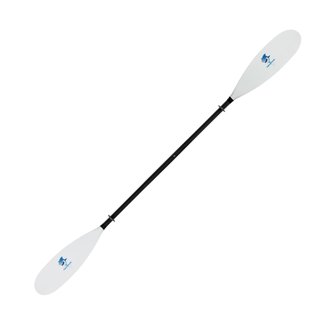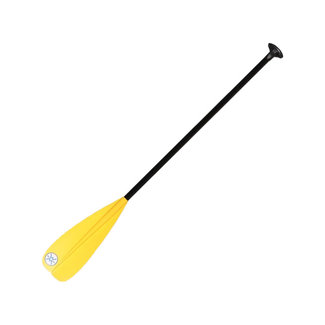How to Choose a Kayak Paddle
Kayaks paddles, much like kayaks themselves, come in different styles, sizes, and construction types. The type of kayak paddle you choose will be based on several factors, such as your personal paddling style and intended paddling environment, your height, the style and width of your boat, and your budget.
Kayak paddlers typically fall into one of two (or somewhere between) categories with their paddle stroke: low-angle or high-angle. A kayak paddler with low-angle stroke will have a more relaxed technique, keeping their hands below chest-level and planting their blade at a more horizontal angle, whereas a paddler a with a high-angle stroke will usually have a more aggressive stroke, with their top hand coming up to shoulder-height and the blade entering the water more vertically. A low-angle stroke requires less energy and your pace can be maintained for a longer periods, whilst a high-angle stroke takes more effort, but generates more power and speed.
| Low-Angle |
 |
| Werner Kalliste |
| High-Angle |
 |
| Werner Cyprus |
Your preferred paddling environment will also help you decide whether you need a low-angle or high-angle kayak paddle. Casual lake paddlers, kayak anglers, and long distance kayakers will appreciate the low impact of a low-angle paddle. Paddlers venturing into rough waters, surf, or just enjoy a workout will prefer the performance of a high-angle paddle.
Now that you have an idea of what style of paddle you need, you're probably wondering how to size your paddle. Low-angle paddles will be longer than high-angle paddles, and your height and the width of your kayak will also factor into deciding your ideal length. Some paddles have adjustable length options, so if you have multiple boats, or different-sized people will be using the paddle, an adjustable paddle is for you! As a rough length guide, see the charts below:
| Low-Angle | ||||
| Height/Width | Under 23" | 23" to 28" | 28"-32" | Over 32" |
| Under 5' | 210cm | 220cm | 230cm | 240cm |
| 5' to 5'6" | 215cm | 220cm | 230cm | 240cm |
| 5'6" to 6'+ | 220cm | 220cm | 230cm | 240cm+ |
| High-Angle | ||
| Height/Width | 25" & Under | Over 25" |
| Under 5'1" | 200cm | 210cm |
| 5'1" to 5'4" | 205cm | 215cm |
| 5'4" to 6'+ | 210cm | 220cm |
Paddle constructions affect the feel and functionality of the paddle. All of our kayak paddles separate into at least two pieces for easy transport and storage, however, some paddles separate into four pieces, which is ideal for use with an inflatable kayak as you can store the paddle in the bag with the boat when it's packed up, or if you want a compact spare paddle to bring on expeditions. The different materials used for paddle blades and shafts determine its stiffness and performance. On the more budget-friendly end you have nylon blades paired with a fiberglass or carbon shaft, then you move into fiberglass blades with a carbon shaft, and for the best performance and lightest weight you have full carbon paddles.
How to Choose a SUP Paddle
SUP paddles, much like paddle boards themselves, come in different styles, sizes, and construction types. The type of SUP paddle you choose will be based on several factors, such as your personal paddling style and preferred environment for paddle boarding, your height, the style and width of your paddle board, and your budget.
SUP paddles come in three main blade shapes: Teardrop, Hybrid, and High Aspect. The shape you choose will be determined by your natural technique while paddle boarding. The classic Teardrop blade is wide and fairly rounded at the bottom, so even if you have very relaxed technique (top hand below chin-level and shaft coming across your chest) you'll still get plenty of blade in the water. The Hybrid blade is squared off slightly in the lower portion of the blade, bringing some of the surface area higher up. This allows you to more easily choose how much blade you want in the water. The High Aspect shape is very squared and is narrower than the other shapes, allowing you to plant the blade much closer to the board for a better catch and stronger pull in the water. See blade examples below.
| Teardrop |
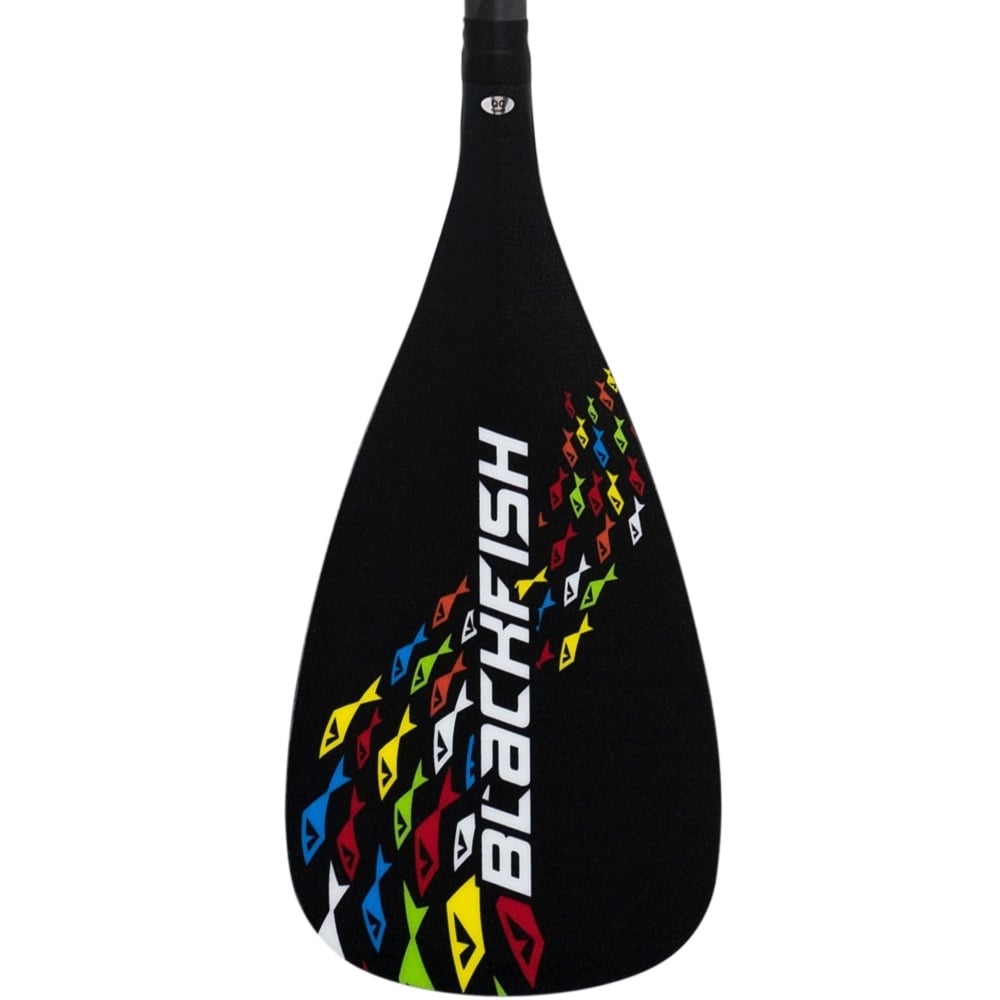 |
| Blackfish Nootka |
| Hybrid |
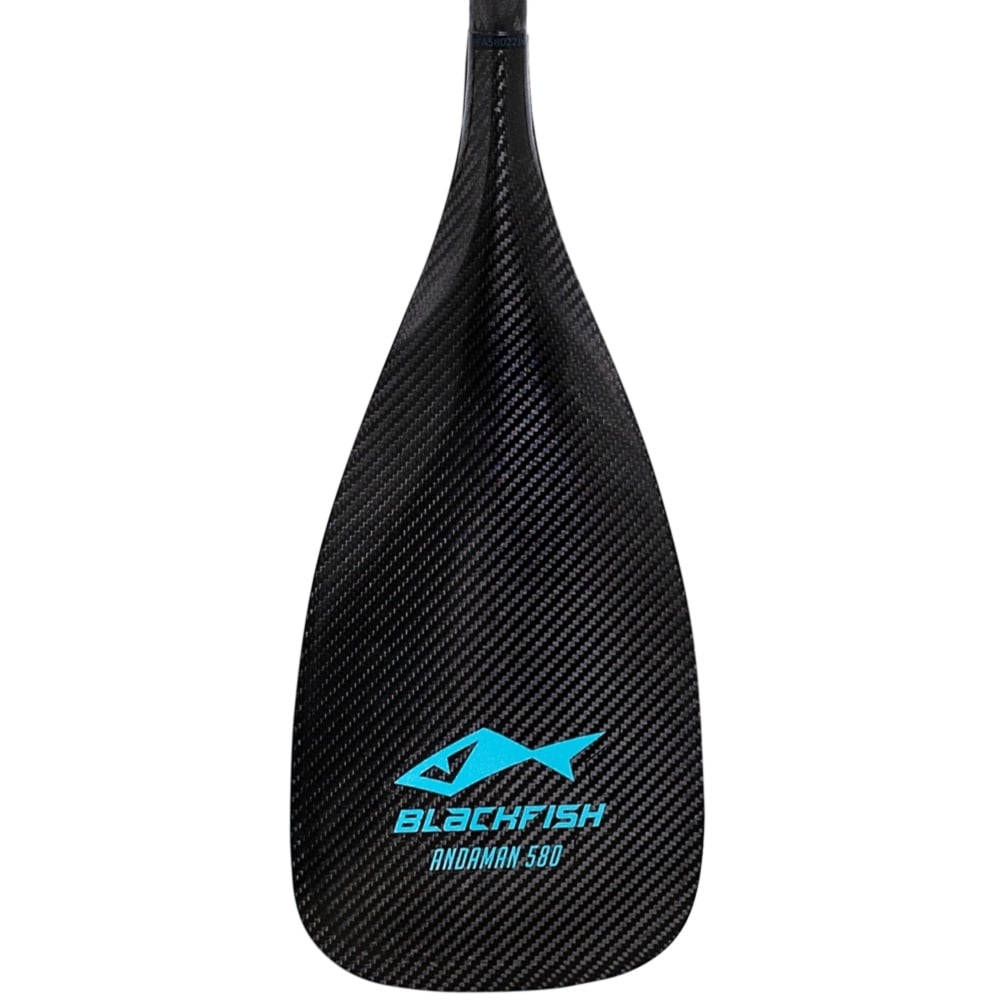 |
| Blackfish Andaman |
| High Aspect |
 |
| Blackfish Viento |
| Teardrop |
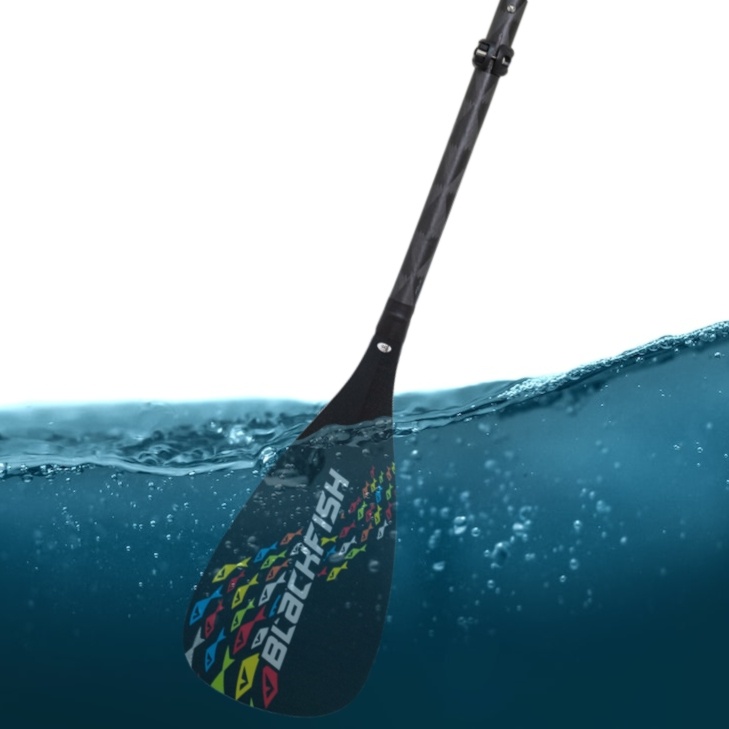 |
| Relaxed angle |
| Hybrid |
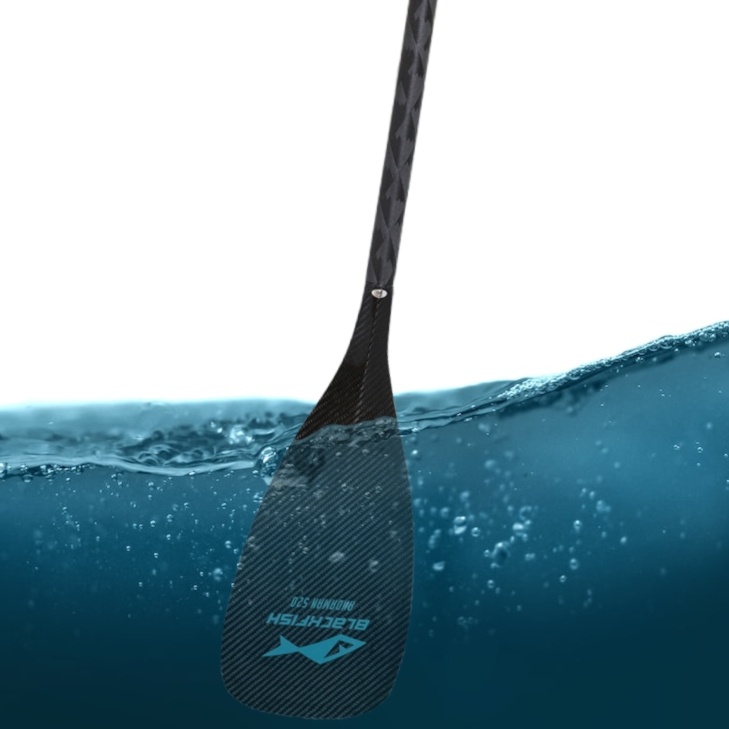 |
| More vertical |
| High Aspect |
 |
| Vertical |
Your preferred paddling environment will also help you decide on which blade shape you need for your SUP paddle. If you're cruising around lakes and bays, or getting in the surf, the Teardrop blade is ideal. For anyone venturing further and doing some touring, the better performance of the Hybrid shape will benefit you. Fitness paddlers or racers will want a High Aspect blade for maximum performance.
Now that you have an idea of which style of blade you need, you're probably wondering how to size your paddle. We typically recommend a paddle length somewhere between the top of your head and 8 inches over head height. Casual paddlers, and those with wider boards will need a longer shaft, whereas a racers will want to go fairly short so they can maximise core engagement. Many paddles have adjustable shafts so you can experiment with length and find what works best for you. If you're purchasing your first one piece paddle and getting it cut to size you can start long and have it cut down again later if you need.
Paddle constructions affect the feel and functionality of the paddle. SUP paddles often come in options of One Piece, Two Piece Adjustable, and Three Piece Adjustable. One Piece paddles will be the lightest and stiffest and are a set length, Two Piece paddles are adjustable, and Three Piece paddles are adjustable and have a removeable blade for easier storage and transport. The different materials used for paddle blades and shafts determine its stiffness and performance. On the more budget-friendly end you have nylon blades paired with a fiberglass or carbon shaft, then you move into fiberglass blades with a carbon shaft, and for the best performance and lightest weight you have full carbon paddles.


